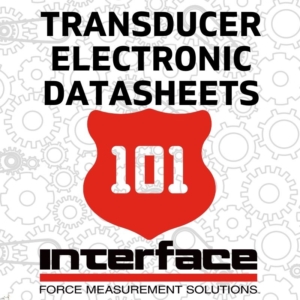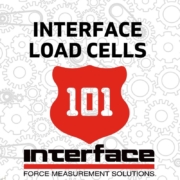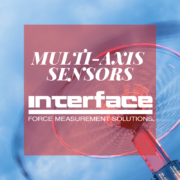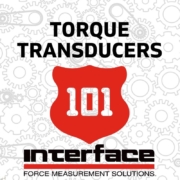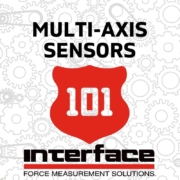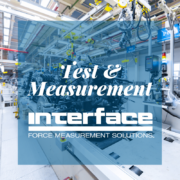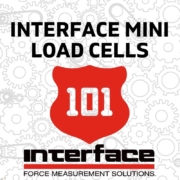TEDS 101
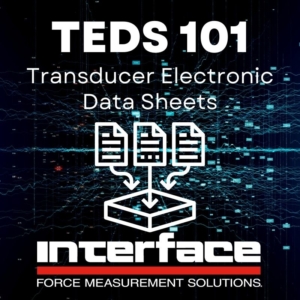 In the electronics industry, sensor compatibility challenges can lead to significant issues with efficiency, accuracy, safety and more. When it comes to force measurement sensors, incompatibility issues can railroad an entire project. This is where the role of Transducer Electronic Data Sheets (TEDS) comes into play.
In the electronics industry, sensor compatibility challenges can lead to significant issues with efficiency, accuracy, safety and more. When it comes to force measurement sensors, incompatibility issues can railroad an entire project. This is where the role of Transducer Electronic Data Sheets (TEDS) comes into play.
TEDS is a set of electronic data in a standardized format stored in a chip that is attached to a transducer, therefore allowing the transducer to identify and describe itself to the network and ease automatic system configuration. This self-identification capability for the transducer is needed for maintenance, diagnostics, and to determine mean time between failure characteristics. The chip stores information such as manufacturer name, identification number, type of device, serial number, as well as calibration data. The TEDS can be uploaded to the system upon power up or request. It also serves as documentation for the transducer.
Transducer Electronic Data Sheets (TEDS) provide:
- Sensor with electronic identification
- IEEE 1451.4 standard for smart transducer interface
- Plug and play readiness
- Storage of sensor information and calibration data
- Use with new or existing sensors
IEEE1451.4 specifies a table of identifying parameters that are stored in the load cell in the form of a TEDS. TEDS is a table of parameters that identify the transducer and is held in the transducer on a EEPROM for interrogation by external electronics.
A TEDS chip becomes the ultimate tool to allow users to take off-the-shelf sensor solutions and integrate them into a total force measurement solution. The key benefits TEDS provide includes:
- Eliminating potential for data entry error
- Simplifying new system setup and speeds up the process
- Making swapping load cells in and out of a test system seamless
- Improving safety by ensuring the system has the correct sensors
- Easily identifying and tagging sensor locations
- Improving inventory control of sensors
- Changing sensors out without jeopardizing integrity of the system
TEDS chips can be sold separately or integrated into existing systems such as instrumentation products. Interface offers both options, selling TEDS as a standalone accessory, as well as integrating them into instrumentation solutions, such as:
9840 Calibration Grade Multi-Channel Load Cell Indicator
Model 9840 is suitable for use in calibration labs, field service, or anywhere high accuracy is important. This product’s features include a bipolar 6-digit 2-line display, remote sense, low noise, 24-bit internal resolution, USB port with RS232 communication, mV/V calibration, store calibrations for up to 25 sensors. 6-point linearization, unit conversion and front-panel tare. This unit also has Self-calibration via TEDS Plug and Play ready IEEE 1451.4 compliance.
9320 Battery Powered Portable Load Cell Indicator
Model 9320 is a bipolar 7-digit handheld meter featuring two independently scalable ranges, peak and valley monitoring, display hold, mV/V calibration, and a power save feature. Typical battery life exceeds 45 hours of continuous use and 450 in low power mode. IEEE1451.4 TEDS Plug and Play compliant.
Additional TEDS Ready Interface Solutions
9840-400-1-T 4-Channel Intelligent Indicator
9840TQ mV/V Input Torque Transducer Indicator
9870 High-Speed High Performance Teds Ready Indicator
BX6-BT Portable 6-Channel High Speed Bluetooth Data Logger
BX8-AS BlueDAQ Series Data Acquisition System With Industrial Enclosure
BX8-HD15 BlueDAQ Series Data Acquisition System For Discreet Sensors With Lab Enclosure
BX8-HD44 BlueDAQ Series Data Acquisition System For Multi-Axis Sensors With Lab Enclosure
These solutions make a great addition to any testing environment as they enable quick compatibility and are very easy to setup. To learn more about TEDS or to explore how TEDS can help solve your force measurement challenges, contact us to explore the possibilities.
